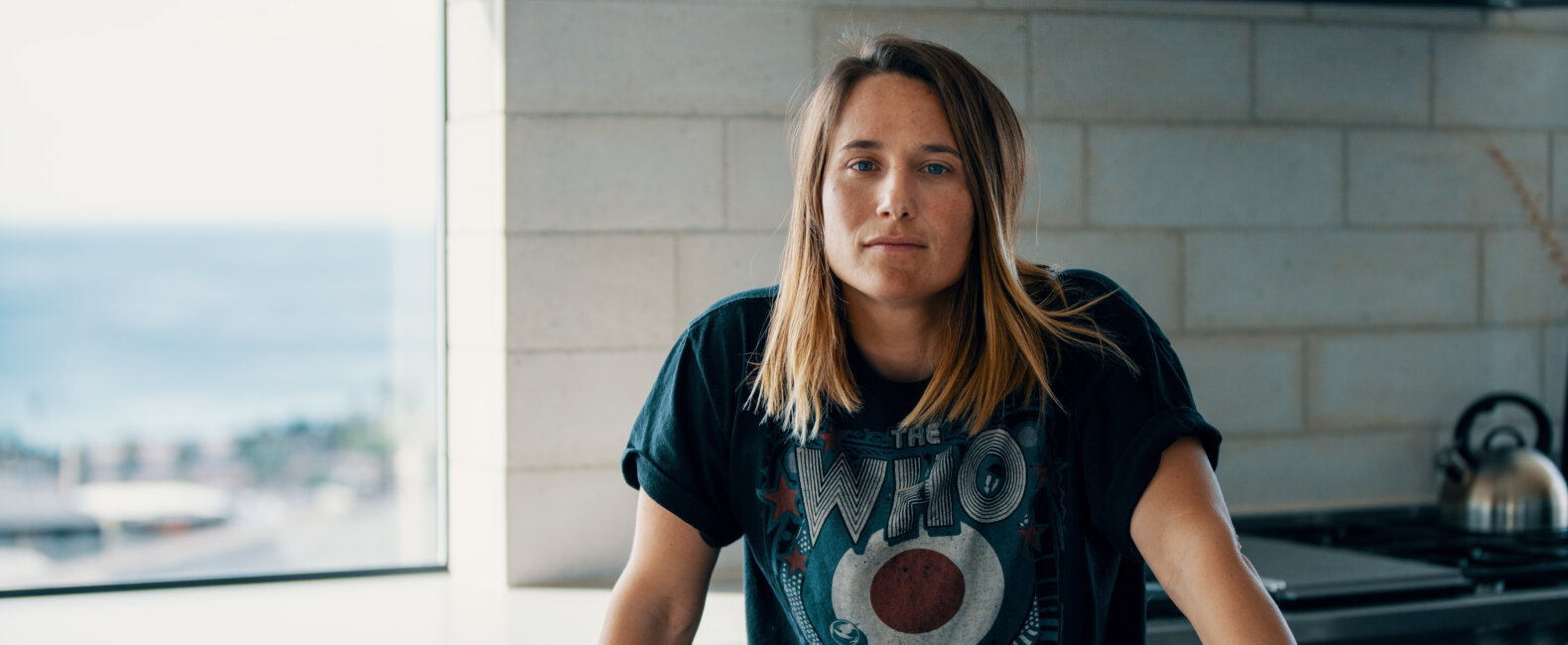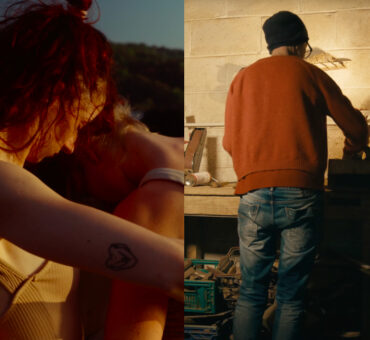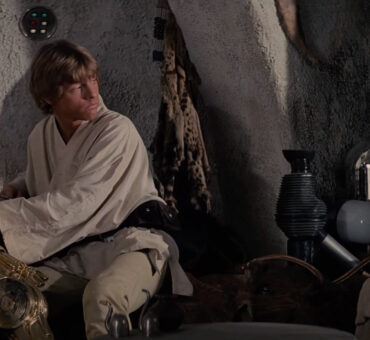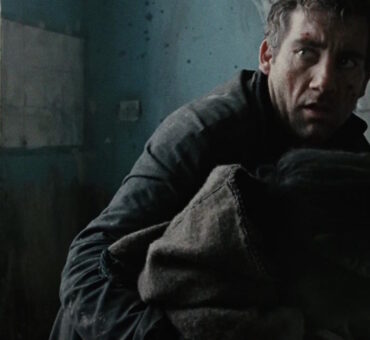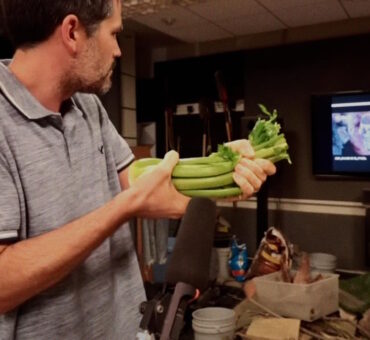Whether you’re on the creative team or production team, you need to master the art of compromise. Someone is going to have to give something up, and that’s not necessarily a bad thing. Business goals need to be met, and creative goals need to be fulfilled—if not, it’s going to fall flat on either side. For Kaki Orr, Senior Global Creative Producer and Content Lead for The North Face, her job is finding that place in the middle:
“Finding the balance is worth it. Finding the opportunities to tell a deeper, richer story, while still accomplishing the goal of your teammates across the brand is really important. The creative tension and the business tension are worth it,” she told us.
A pessimist might say you’re giving something up when you attach a story to a product. But, an optimist might say brands are providing a massive platform to share inspiring stories—one that surely couldn’t exist in a vacuum with product releases and KPIs. For Kaki, this optimism is what seems to drive her career, and makes the constant balancing act worthwhile.
In our conversation, we talked about what it means to be a creative producer, how The North Face has been producing content in the face of the pandemic, and what “Never Stop Exploring” truly means to their customers.
Musicbed: How do you incorporate creativity into your role?
Kaki Orr: My role has transitioned away from being a true on-location producer day-in and day-out. Now, my creativity lives in what’s possible. True “creatives,” people I work with in-house and through our external production teams, can just go off on a total whim. They’re thinking, “This is my vision, and here’s how I want it to go.” My creativity ends up being what actually happens or tangibly gets executed. It lives with a grip on what is possible.
I’ll shoot for the moon, whereas a creative partner might totally shoot for Pluto and we’ll end up somewhere between the two. It’s my job to pull that creativity back to something that’s grounded in reality or what’s possible within the budget or where we can go. For example, the pandemic has been a really interesting time to be creative and produce. I don’t see myself as creative all the time, but I can see the potential in the project and then root that against some of the realities that we’re working within. It’s a whole other way to be creative because it’s tangible.
It’s almost like those two sides—reality and creative—need to have that tension.
Yeah. I have a really good partner at The North Face and he runs our social content. When it comes to creating our films, we have this really perfect balance—I know the athletes and what their goals are, the mountain conditions, and what it will take to get that many people on the ground filming. On the other side, he’s already thinking about the potential of the narrative and how we could shoot it. It’s important to have that balance.
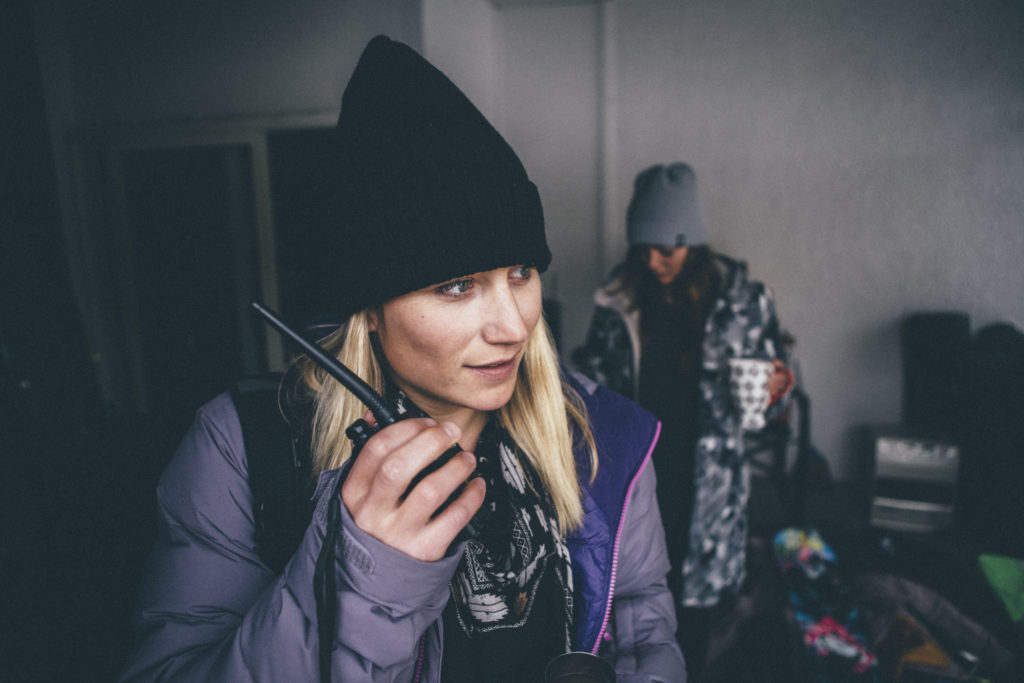
How do you hone your skills as a producer? Is it about constantly putting yourself in new situations?
For me, it’s about continuing to get to know people, growing your relationships, and hearing what people are doing. Who’s creating and staying in the mix with the outdoor world? For me, I like to ski and bike and climb because it’s fun, but it’s also about cementing those skillsets that I use on productions. Growing as a producer is growing who I can reach out to and work with, and knowing what their skillsets are.
Being able to piecemeal the crew all the way is important—guides, videographers, photographers, directors. If I’m not staying in touch and engaged and having long-winded conversations with people, then I’m not building and growing as a producer.
Those seem like different challenges than they used to be.
One-hundred percent. When I was just getting going as a producer, I was still learning what goes into it and now I really understand. How do I make it the best it can possibly be and run as efficiently as it possibly can? How do we just get this off the ground easily, better than the last time? It’s less about putting the pieces together or knowing what pieces you need, and more about leveraging new and upcoming partners and putting them together more efficiently.
There are so many voices, especially in branded content, that go into creating what matters. At The North Face, we’ve got our brand team and they’re leading with the story, the key product, and the ethos of the season. They’re giving us that strategy brief. Then it’s our job as the creative team to put together an asset matrix against that. That involves working with the sports marketing team. Who are our athletes of the season? How do we weave them into the stories? What expeditions are going? What content are people creating?
Then, there are our creative opinions about how we put it together, what the production budget is, who’s the art director on it, who’s our DP, who’s our art director for motion elements? And then our e-commerce team is saying, “Oh heads up, we’ve got all these commercial needs that are not going to fit perfectly into the storylines. We need to sell a bunch of these jackets, but they have to fit into whatever narrative you put on the plate.”
Once all of those opinions and feedbacks are internally pulled together, there are the opinions and perspectives of who you partner with to bring that to life. Then, it’s bringing that all back to those people and saying, does this work for you?
Whew, I forget what the question was [laughs].
You definitely answered it! How do you manage expectations for that process?
Under-promising and over-delivering is my motto. Here’s an example. We just did a big footwear launch in January. The creative team gets delivered the strategic brief and then we create how we are going to go to market with this footwear. I like to start with our athletes. It’s a great launching point, even just for thought starters. With footwear, it’s obviously a natural tie-in— we’re selling a running shoe and we’ve got runners on our team.
So, I’ll start with athletes who are doing really cool things. Well, all of the races were canceled this year. Okay, that sucks. But then, there were a lot of athletes who were running their own personal fastest times and tried to break records on specific trails. It was pretty cool. It ended up manifesting into two amazing long-form content pieces about an Italian athlete trying to beat his time from last year in a race. The race got canceled this year, but he decided he was going to go out and just run it by himself.
Who knew if he was going to do it, but we sent a film crew out and got some really awesome photography and ended up just filming it, not really knowing at that point what was needed for the campaign. We thought we might tell the story and we might put money behind it, but we wanted to make sure we get the content regardless. It’s a weird way of working.
We ended up putting it together into a piece called Breaking 20, where he actually didn’t accomplish the goal, but the CTA for the shoe ended up being “power further.” He gave it a shot, but he’s going to power further into the future. It’s about tying things back in, which isn’t the dream way of working, but what an awesome opportunity to capture rad outdoor content and then craft it into what the brand needs to go to market.
There are brand campaigns where it’s more about a product or a sentiment for that season. And then there are true athlete expeditions. They used to be separate. We just wanted to put money behind this athlete’s expedition because we believed in what they’re doing. Then, we’d have separate brand campaigns that were more product-driven. And now I’m seeing a marrying of those two, and I think that’s a good way to be doing it. We think this athlete’s story has merit, and it also has merit for what we’re trying to accomplish for that season.
Does part of that shift come down to your audience? Are they just more literate when it comes to branded content?
Totally. People are starting to associate the idea that our product is athlete-tested and expedition-proven more naturally. We’re constantly trying to reinforce our outdoor credentials as a brand. We’re trying to say we are the foremost brand in the outdoors. We want to leave the consumer with a reminder that this product has been through it all and also have people relate to the message of “Never Stop Exploring.” I think it’s the perfect brand motto.
Do you think having that inherent authenticity makes your job easier?
Yes. I think authenticity is key even though that word gets thrown around a lot. We want to be authentic and we truly know what that means. The breezy part of my job is that I know when something feels forced because of my mountain experience and my engagement with those communities.
Honestly, the biggest challenge for me as a producer is to sell our commercial products, those everyday items. We want to stay rooted in the outdoors but we’re also selling this backpack for college kids or Midwestern moms. There’s an opportunity to blur that line, to sell these moments at the top of the mountain, and also sell these moments walking in the streets.
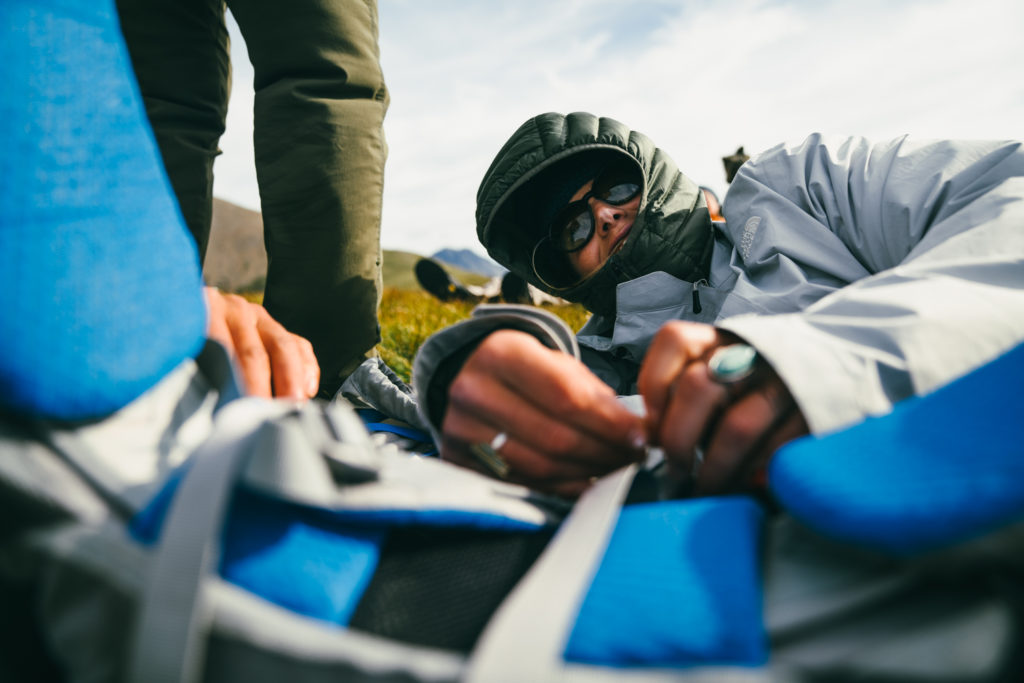
What’s your risk? What are you pushing towards? There’s an opportunity to interpret “Never Stop Exploring” as discovering, getting better, growing, and learning about yourself. I’m really interested in telling more stories about that point of intersection, where it’s not necessarily about these dramatic athletic achievements. We’re also speaking to human existence. That’s what I’m most excited about in the next stage. Based on the times that we’re in right now, who are the best athletes? They can definitely be the people that can get to the farthest places in the world and to the tops of the mountains and do the gnarliest, most risky thing. But I think there’s also an opportunity to tell stories about people who are climbing their own mountains, whatever that mountain is.
We’re at an awesome transition point in culture and in content, reevaluating what makes someone the best “athlete” or what makes someone an “icon.” The cool thing is, The North Face isn’t asking me to tell the same stories over and over. We tell stories that actually dig deeper into the human experience, not just top-of-the-mountain moments.
How do you maintain that balance between storytelling and selling?
I think there’s a lot of balancing that goes into branded content and the best branded content can speak to the human experience. That’s what gets you away from just seeing a logo or having a product pushed. I sometimes have a hard time with the balancing act of being a marketer and a storyteller, but that balance has become less difficult as I’ve gotten more confident in the stories that I want to tell.
When you’re collaborating across marketing and e-commerce and product, everyone’s got a different goal. It’s our job to make sure that it doesn’t feel like a product’s getting pushed on you. If that’s something we’re trying to do, if we’re selling this coat, then I hope that I can do it gracefully.
Finding the opportunities to tell a deeper, richer story, while still accomplishing the goal of your teammates across the brand is really important. The creative tension and the business tension are worth it. That’s the best part about being a producer, is that you have the opportunity to be successful for everyone.
To hear more from Kaki and the team at The North Face, check out Filmsupply’s Behind The Work episode featuring their film ’Lhotse‘.
Read our conversation with YETI’s Head of Content, Scott Ballew, about what he looks for in a branded content film.















































































